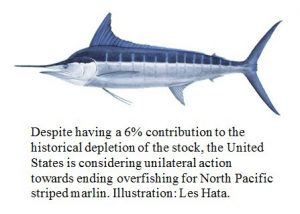January 31, 2024 — The organization responsible for managing the catch of more than half the world’s tuna holds a key section of its annual compliance meeting in secret. For three days, a committee of the Western and Central Pacific Fisheries Commission (WCPFC) assesses how well member states are following fishing rules, without any outside observers present. The WCPFC says the meeting is closed for technical reasons, not to hide bad behavior. But critics contend this raises the possibility that countries with bad-acting vessels operating under their flag may avoid public scrutiny.
Regional fisheries management organizations (RFMOs) like the WCPFC, which manage fishing in international waters, or the “high seas,” should be accountable to everyone, according to environmental advocates who are making an increasingly vociferous case for RFMOs to become more transparent. RFMOs are, after all, in charge of shared public resources. Yet the public doesn’t always get a seat at the table: many RFMOs block access to journalists and even to NGO observers during sensitive meetings.
When observers are allowed in to RFMO meetings, they’re sometimes restricted in what they can say publicly, especially in real time, as decisions are being made. RFMOs issue reports after meetings, but few explain how parties voted or what positions they took during negotiations.
“When an RFMO puts out a report, it doesn’t say, ‘Country X torpedoed this proposal,’” Ryan Orgera, global director of Accountability.Fish, a Virginia-based advocacy group, told Mongabay. “It simply says, ‘consensus was not reached.’”
The lack of detailed information makes it difficult for reformers to hold countries accountable when they fall short of their environmental commitments: There’s no public pressure because the public doesn’t know where to direct it.
Reformers such as Orgera argue that increased transparency would help RFMOs reach their stated objective: broadly, to manage and conserve fish stocks in the high seas and “straddling” stocks that migrate between the high seas and countries’ exclusive economic zones, which extend 200 nautical miles (370 kilometers) from shore.

